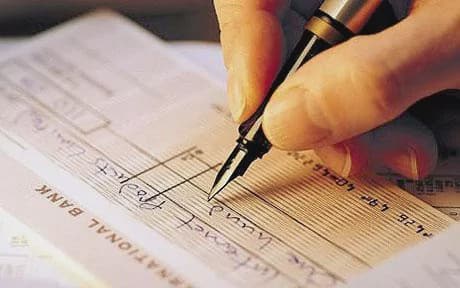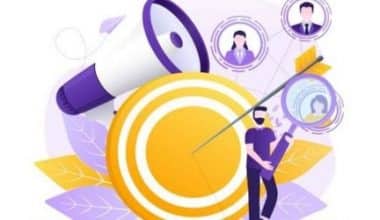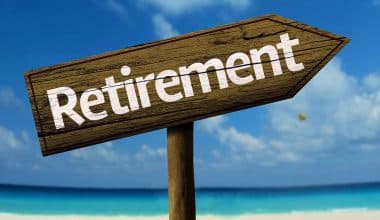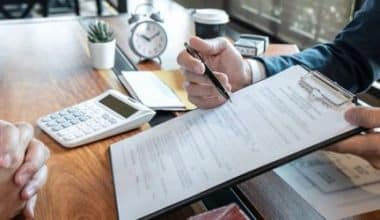For the longest time possible, credit and debit alert frauds have been on the rise. According to reports, the numbers rose to a whopping 490,220 cases over the last six years. However, due to the additional layers of security put in place by banking institutions, the tables have turned. The new EMV chips make it more difficult to commit credit and debit card frauds, which opens the door to checks. This article, however, hopes to provide you with the precautionary measures you would need to take to avoid falling victim to check frauds. But before we head down that path, let’s get acquainted with the basics. I mean a quick look at what check frauds are, their types, and websites, including the Ezshield check fraud protection.
To a large extent, check frauds are way easier to pull off. Reason being that every single time you sign or write a check you basically provide the required information to commit check frauds. And for the most part, it’s been an issue trying to swiftly reach out to the authorities through check fraud websites in the event of a successful scam. Bank workers and business owners often rank as top victims.
Well, let’s reduce those rankings already…
What is Check Fraud?
Check fraud is any attempt to gain money unlawfully through the use of paper or automated checks. This may involve someone writing a bad check on their own account, forging a check in another person’s name, or totally fabricating a check.
However, other major techniques include withdrawing funds during the float (the period between the negotiation of the cheque and its clearing at the cheque writer’s financial institution). Cheque kiting, in which funds are deposited/withdrawn prior to the expiration of the float cycle to mask the scam, and paper hanging, in which the float provides the opportunity to write false cheques but the account is never replenished.
Let’s move into getting acquainted with the several types of check frauds out there.
Types of Check Frauds
The first step to combating this menace is being able to identify the types of check frauds. Knowing this will help you become extra careful when dealing with cheques. It will also help you avoid scenarios where you unconsciously become a pawn in the process of defrauding through this means.
Although scammers worldwide are constantly in search of new techniques to make the process way swifter without detection, below are some of the most common types of check frauds you should be aware of.
Paper hanging:
Account-holders who deliberately write bad checks on their accounts are known as paperhangers.
Check kiting:
This is the fraudulent act of writing a check from a bank account that does not have enough money to pay the check.
Check Floating:
A scenario where an account holder writes a check to another person or individual in order to buy time before depositing funds into their account.
Forgeries:
When someone duplicates an account holder’s signature on a check. This type of check fraud is the most popular.
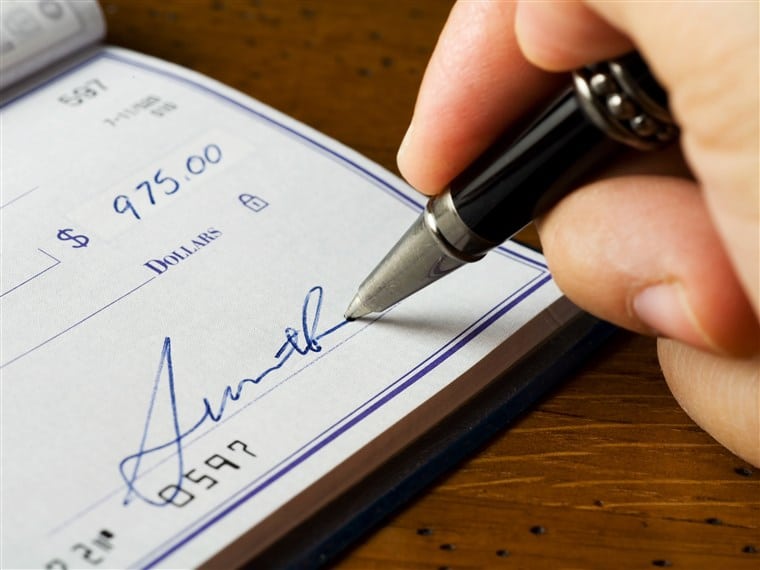
Check Theft:
When a person steals another person’s paper check. And they either use it to pay for products or services, deposit it in their own bank accounts, or attempt to cash it at the bank over the counter.
Identity Check Theft:
When someone opens a bank account in the name of another person and writes checks from it.
Chemical Alteration:
Where an individual uses chemicals to remove the ink from a check so that they can rewrite it. For example, a robber might steal a check from a mailbox, delete the intended recipient’s signature, write their own name on the check, and cash it. A con artist may even use chemical modification to correct the number on a check.
Counterfeiting:
This occurs when a con artist takes a victim’s checking account information and prints a large number of checks to use on the victim’s account.
Like I earlier mentioned, outside these types of check frauds, new methods come up occasionally. However, we will always keep you posted as they come up to prevent you from becoming victims.
How to Avoid Check Fraud
Prevention, they say, is better than cure. So having learned the various types of check frauds, it is important to guard against frauds of this nature by keeping an eye on your checks.
While checks are, fairly speaking, the most important part of financial identity theft, it is up to the individual to make every effort to keep them and the details on them private.
To complete successfully achieve this, you should follow these steps:
#1. Reduce the probability of fraudulent distribution of your checks
Because most checks are simple to forge, secure your account details as well as your routing number and everything else that may be used to generate fake checks.
#2. Establish a procedure for accepting checks:
But also be ready to adhere to it on a regular basis. Valid forms of identification, required details to accompany checks, and check writing dollar limits should all be specified in your policy. Also be aware that check acceptance policies demanding a credit card number on the check are illegal in many jurisdictions.
#3. Request for IDs:
Accepting checks requires cashiers to not only double-check that the customer’s name, address, and phone number are imprinted on the check. They should also confirm that this information matches the details on the ID. Make sure the check’s written and numerical amounts match. However, if or when a bank decides to process a check with different amounts written on it, the written sum takes precedence over the numerical number.
#4. Verify the customer’s identity is up to date:
Expired driver’s licenses are often used to cash more than half of all forged checks.
#5. On the check, write the cashier’s ID number or initials:
If there is a prosecution, this information would be needed.
#6. Feel the check:
Since most check papers are of the same weight and texture, merchants should understand the “feel” of the check. Commercial checks, with the exception of those provided by the government, should have a perforated edge. The typeface should be compatible and matched as well.
#7. Examine the figures:
Ninety percent of most bad checks have a value of less than $500. However, bear in mind that a customer could open a checking account and begin writing checks with a higher amount.
#8. Disallow checks from second or third parties
Just about 1% of the 60 billion checks written every year are returned. According to the Nilson Study, a news service for the payment services industry, one-third of check fraud is caused by closed accounts and “check kiting.” Another 27% of check frauds were attributable to counterfeit checks, 24% to forgery, and 12% to bankruptcy, with the remaining 5% attributed to other causes. Check fraud is a higher-than-average risk for restaurant and hospitality business owners. Check fraud is more common among merchants who work in industries where stolen goods, such as electronics, can easily be resold. It can be difficult, if not impossible, to collect on bad checks. In the United States, only about a third of checks returned due to insufficient funds are ever paid in full. Collection attempts, on the other hand, are much more effective if the merchant seeks payment as soon as possible.
Check Fraud Websites
Websites that could either help you either get refunds as a business owner or track down account holders responsible for check frauds fall under this category. There are just a handful of them across the net, one of which is the Ezshield fraud protection. However, for Ezshield check fraud protection, they are a variety of things you could do on the platform. According to their website, a rundown of their services include;
1. EzShield Check Fraud Protection includes dealing with altered, endorsed, or forged checks
EzShield Check Fraud Protection
2. Advances funds up to $25,000 within 72 hours for qualified losses
3. End2End DefenseSM 32-step recovery process
4. Check replacement
Furthermore, besides EzShield, other websites or agencies you can reach out to in the event of a check fraud incident, depending on the type, include the following;
Report fake checks you receive by mail to the U.S. Postal Inspection Service.
Report counterfeit checks to the Federal Trade Commission, either online or by phone at 1-877-382-4357.
Contact your bank to report and stop unauthorized automatic withdrawals from your account.
Forward phishing emails to the Anti-Phishing Working Group at reportphishing@apwg.org. If you got a phishing text message, forward it to SPAM (7726).
Report any phishing attacks to the FTC at ftc.gov/complaint.
HelpWithMyBank
What Is Considered a Check Fraud?
Check fraud is any attempt to get money illegally by writing or scanning a check. This can happen when someone writes a bad check on their own account, forges a check in someone else’s name, or writes a completely fake check.
Can You Go to Jail for Depositing a Fake Check?
If you fall for a scam and deposit a bad check in good faith, you probably won’t be charged with a crime. But if you put a fake check in the bank on purpose, you could face fines and jail time.
How Serious Is Check Frauds?
Check fraud is usually a misdemeanor, which can lead to criminal fines and up to a year in jail. Felony charges can lead to fines of thousands of dollars and jail terms of more than a year or even several years, depending on the severity of the crime and the laws of the state in question.
How Do Banks Catch Fraud Checks?
Most of the time, they put the ink in places that are important, like the amount line, the signature, and the bank logo. The bank then runs the check through a UV-scanner to see if any of the UV ink has been changed or tampered with.
- Check Card: How to Check Card Visa, American Express, Stimulus (+ free tips)
- ELECTRONIC MONEY: How It Works, Advantages and, Disadvantages
- How to Endorse a Check for Mobile Deposit: All you Should Know
- BACK OF CHECK: How to Sign, What to Write & Wrong Endorsement Solutions
- ENDORSE A CHECK: How to Endorse a Check to Someone Hitch-free
